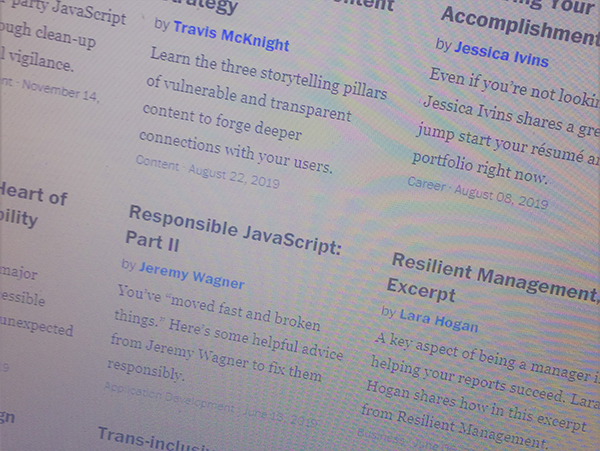
How do website design and SEO fit together? This is an important question when it comes to small business websites, which usually share a disappointing similarity: cheap template syndrome. It comes about when someone picks a design template they like, and then they try to figure out how to fill it with content for their business. Then they come to us and say "I'm not showing up in search. I need some SEO".
Picking your design template first is backwards.
The way to start a website design project is to figure out what blocks of content you need to present your business, and what their priority is. SEO, with the all-important keyword research, as well as Gap Analysis and Competitive Analysis, do this. Do you really need those big, round icons that don't link to anything? How about those scrolling banners or big stock photos? Your site structure, which is your site index, navigation and content plan, will answer these questions and more.
It's especially important when a website has to deliver a lot of content. Most SEO tools will tell you that you'll need a lot more words than you think, and that's when most website design templates fall apart.
Often we'll find we might need 800 or 1000 words to rank competitively for a single subject, which might need to be all on one page. If you just fill the page with content, you'll turn many users away. That amount of content requires a different design treatment to separate content into chunks, and that may not be in your template. As a potential viewer, with the typical 8-second attention span, how interested would you be in a provider whose website is jammed so full of text you don’t know where to look first?
Designers will object, but good website design can coexist with good SEO practice. And good designers can make it work, even when there's lots of words.
SEO is an important part of the equation.
SEO, properly done, is an essential building block of a good website, but not the only one. SEO will bring them in, but then you have to convert them. The other elements are:
(Some folks don’t really understand the difference between messaging and content. We’ll expand on this point in another post.)
Building a website without any one of these elements is a mistake. SEO is absolutely essential and it can support design, messaging and branding beautifully. It can also support business process, and be optimized for local businesses or national. Templates can have a hard time with some of that.
Your website provider should understand all sides of the web equation, even if they don't do it all themselves. You need awareness of brand, messaging, design, process, content, user interface, and back-end integration as well as SEO. They should be truthful as to their capability to understand it but not necessarily DO it, but be willing to call someone who does.
Spend the time you need to get comfortable with them and their capabilities. Don’t get sold by pretty pictures that don’t get traffic, or websites that no one will read because they’re a text jumble. Like life, the best result will be a balance of the essential things.